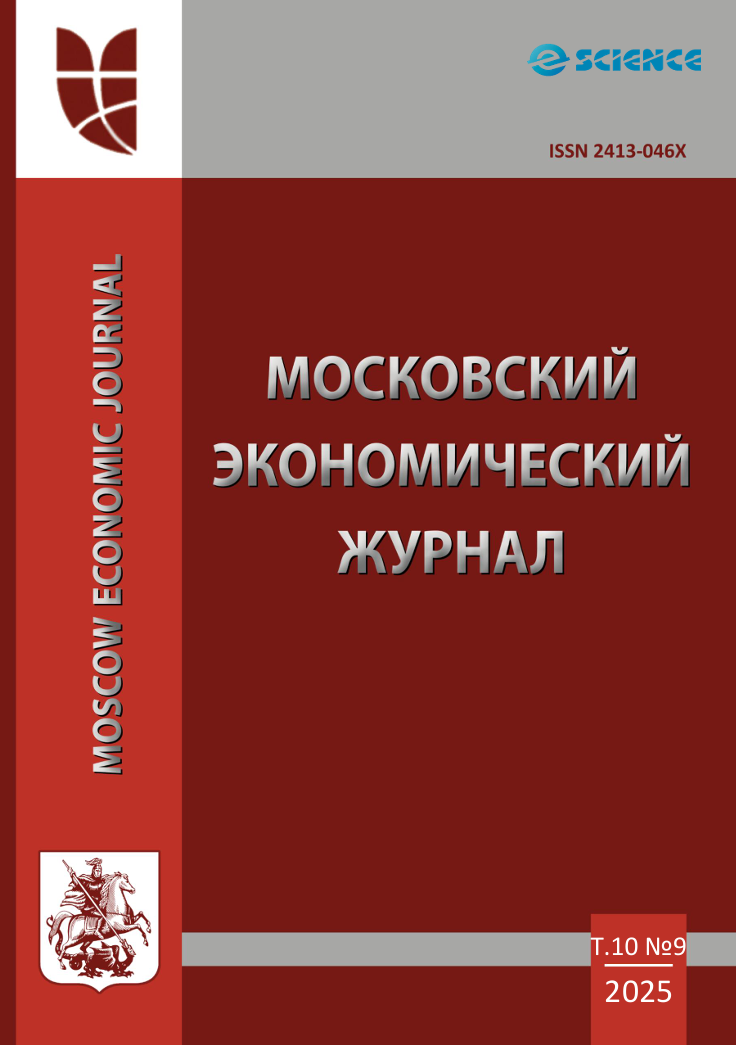Krasnodar, Krasnodar, Russian Federation
UDC 332.14
The article describes the author's approach to the construction of a methodology for a comparative integrated assessment of the economic efficiency of rice farms. It is shown that the basis for assessing economic efficiency should be an industry approach - an approach that involves assessing the economic efficiency of individual farms in comparison with a group of enterprises in one branch of the economy, which allows, firstly, to justify the change in economic efficiency in comparison with industry indicators, secondly, to identify the factors that determine the growth of economic efficiency in individual enterprises, thirdly, to get an idea of the potential opportunities for growth of economic efficiency, as well as the construction of a model economic model of enterprise activity that ensures maximum economic efficiency. As a result, the author has built a multi-level method of comparative analysis of the activities of economic entities — rice farms. The basis of the proposed technique is the method of Euclidean distances, adapted by the author, which is a special case of the mahalonabis equation. The basis of this method is the construction of mathematical distances and the assessment of the position of each studied factor relative to the points of extremes with the construction of a subsequent complex indicator... Thus, the task of comparative assessment of the economic activity of the enterprise by a set of factors is solved... Consideration of the proposed method in dynamics allows us to determine the specifics of the course of economic processes in the industry by the totality of enterprises and to obtain the necessary justification for regional state economic policy in terms of supporting and stimulating economic efficiency in the economy in question.
economy, region, regional policy, economic efficiency, comparative assessment, integrated economic assessment, regional policy development process, implementation mechanism, implementation principles
1. Savickaya G.V. Kompleksnyy analiz hozyaystvennoy deyatel'nosti predpriyatiya. – M.: NIC INFRA-M, 2016. – 608 s.
2. Sheremet A.D. Metodika finansovogo analiza deyatel'nosti kommercheskih organizaciy. – M.: NIC Infra-M, 2016. – 208 s.
3. Pervuhin D.A., Klavdiev A.A. Ocenka kachestva slozhnyh sistem na osnove metodov stohasticheskogo podobiya // Zapiski Gornogo instituta. – T.214. – S. 85–91.
4. Malahov D.I., Pil'nik N.P. Metody ocenki pokazatelya effektivnosti v modelyah stohasticheskoy proizvodstvennoy granicy // Ekonomicheskiy zhurnal Vysshey shkoly ekonomiki. – 2013. – № 4. S. 660–686.
5. Afanas'ev M.Yu. Model' proizvodstvennogo potenciala s upravlyaemymi faktorami effektivnosti // Prikladnaya ekonometrika. – 2006. – Vyp. № 4. – S. 43–55.
6. Mansurova N.A., Shutyaeva N.O. Metodicheskie osnovy ocenki proizvodstvennogo potenciala promyshlennogo predpriyatiya // Ekonomicheskie issledovaniya. – 2012. – № 4. – S. 21–25.
7. Rubakov S.V. Sovremennye metody analiza dannyh // Upravlenie naukoy i naukometriya. – 2008. – № 4. – S. 165–176.
8. Antoshkin A.I., Lazutkin R.R., Leont'ev V.V. Sovremennye metody analiza dannyh, izbrannye glavy. – M.: MGU, 2023. – 76 s.
9. Shurpenkova R.K., Sarahman O.N. Metody kompleksnoy ocenki vneshney i vnutrenney sredy predpriyatiya: preimuschestva i nedostatki // Ekonomika i banki. – 2020. – № 1. – S. 3–12.
10. Lukoshkina T.S., Galickaya Yu.N. Metody kompleksnoy ocenki effektivnosti biznesa // Ekonomika i biznes: teoriya i praktika. – 2019. – №.12–2. – S. 75–78.











